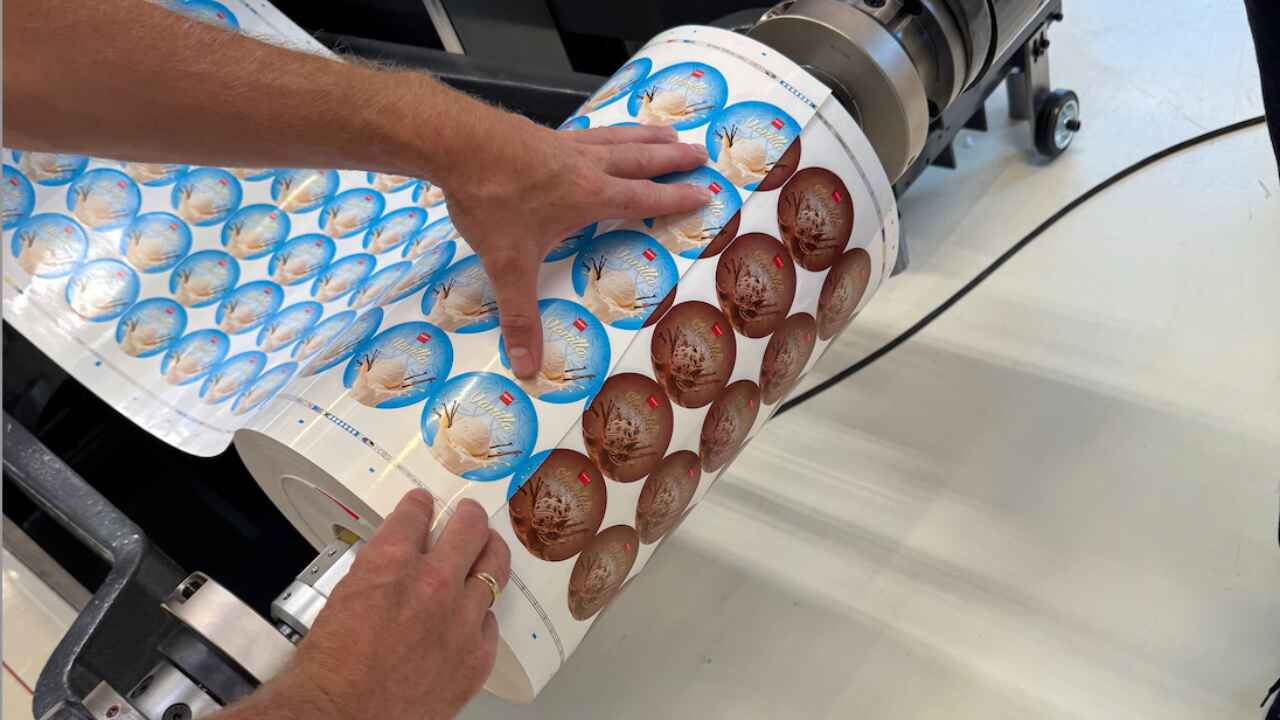Nilpeter shows next-level automation at Labelexpo
At Labelexpo Europe, Nilpeter will demonstrate for the first time a 4-color makeready on a running press with seamless changeover between jobs.

Nilpeter will demonstrate its next-generation automation system on an FA-17 press at Labelexpo Europe 2025, making-ready a 4-color job while the press is still running, then switching seamlessly between jobs with minimal waste.
‘This is the next level of flexo,’ states Carsten Clemensen, chief technology officer at Nilpeter. ‘Our ambition is to match digital performance parameters while maintaining flexo cost efficiency and flexibility. We are achieving this by moving the job change from when the press is stopped to when the press is running. On-the-fly changeover between the two 4-color jobs is handled fully automatically with no operator intervention.’
At a recent demo at its Slagelse, Denmark headquarters, Nilpeter demonstrated a live changeover between two jobs on an 8-color Nilpeter FA-17. One 4-color job ran at 150m/min on print units five to eight, while a new job was set up on print units one to four, with all job information entered from a single keypad.
“On-the-fly changeover between the two 4-color jobs is handled fully automatically with no operator intervention.”
At the changeover, units five to eight disengaged, and units one to four engaged. The new job started running automatically in perfect register with only a few meters of waste.
‘In this configuration, we are simultaneously running and making ready two 4-color jobs,’ explains Steffen Vahlkvist, technology center manager at Nilpeter. ‘But we could also configure a 12-color press to run two 6-color jobs, or any other combination. Or, for example, you could just change the black plate for a language change. On some jobs, you may only be changing two colors. It is entirely flexible.’
Vahlkvist says it would be possible to change the die-cut format between jobs by using two die stations, which automatically engage and disengage at job changeover. In this scenario, the second die unit can be made ready while the press is running, in the same way as with the print station.
Nilpeter believes its next-level automation project allows flexo printers to match the capabilities of digital and hybrid without having to leave the flexo world.
‘Project Darkroom’
Fully automated job changeovers on a running press is described by Clemensen as a giant leap forward toward Nilpeter’s future ‘Darkroom’ concept. Clemensen describes it as: ‘the press runs itself by AI and machine learning. That is the goal, and this is uncharted ground.’
Clemensen says the goal of the Darkroom project is to further increase uptime compared to a digital/hybrid press, increasing productivity and sellable output. ‘How can we operate at higher speeds and make it a less demanding task for the operator? We want to minimize the time the printer spends walking up and down the machine.’
Clemensen sees AI-driven camera technology as the next major step toward Darkroom.
‘We already have an enormous amount of data, but no way of connecting that to real-time press performance. The key to the Darkroom will be camera technology replacing the operator’s understanding of what is going on in the print.’
Nilpeter is currently researching new camera technology with the right resolution and cost to fit it into every print and converting station on the press, and with the ability to feed back to press control systems.
In his last role before joining Nilpeter, Clemensen was the managing director of B&R Industrial Automation, a subsidiary of ABB Group, already a strategic partner to Nilpeter. Among other things, B&R develops AI-driven smart cameras, giving Clemensen a strong background in how this technology can drive automation and digitization.
‘This camera technology will be integrated into systems that adjust the press in real time. So, whenever we see an error, we are able to correct it instantly. Current inspection systems are very good, but not connected to the machine, and that is the problem. This is one of the key things to change. One hundred percent inspection and the ability to react instantly become the key for us to move forward.’
Press operators will need to be educated on how to get the best from automation and move to more supervisory roles; for example, remotely monitoring multiple presses from a central control point. ‘We are already a step towards that with our Digital Shadow technology,’ Clemensen says. ‘But currently this is purely for monitoring, with no feedback to machine control systems.’
Over the past two years, Nilpeter has been developing new in-house automation skills with a core team of six highly skilled software engineers. The company is also cooperating closely with universities, hosting interns on a regular basis.
‘We cannot differentiate anymore between mechanical and software,’ says Clemensen. ‘We are becoming a software engineering force. It needs a different programming skillset to make a camera interact with a machine.’
Labelexpo Europe 2025 will give visitors the chance to see just how far down the road toward ‘lights-out’ manufacturing Nilpeter has come.
Stay up to date
Subscribe to the free Label News newsletter and receive the latest content every week. We'll never share your email address.


